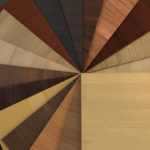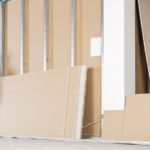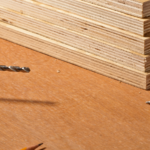What is Plywood? A Beginner’s Guide
- February 7, 2025
Introduction
Plywood is one of the most commonly used engineered wood products in construction, furniture, and interior design. Known for its strength, versatility, and cost-effectiveness, plywood is an essential material for both professionals and DIY enthusiasts. In this guide, we’ll break down everything you need to know about plywood, including its types, benefits, and common uses.
What is Plywood?
Plywood is a manufactured wood panel made by gluing together thin layers of wood veneer. These layers, known as “plies,” are arranged with their grain directions perpendicular to one another to enhance durability and resistance to warping.
How is Plywood Made?
- Logs are peeled into thin veneer sheets.
- Veneers are dried and glued together with adhesives.
- The sheets are pressed under high pressure and heat.
- The final board is cut and finished to the desired size.
Types of Plywood
1. Commercial Plywood (MR Grade)
- MR (Moisture Resistant) Plywood is used for interior applications like furniture and paneling.
- It is not waterproof but resists humidity and moisture to some extent.
2. Boiling Water Resistant (BWR) Plywood
- Stronger than MR grade, BWR plywood can handle exposure to moisture and damp conditions.
- Ideal for kitchen cabinets, bathroom furniture, and outdoor usage.
3. Marine Plywood (BWP Grade)
- Best suited for extreme moisture conditions, like boats and coastal furniture.
- Made with waterproof adhesives for superior strength and longevity.
4. Hardwood Plywood
- Composed of high-density hardwood veneers.
- Offers excellent durability, making it ideal for high-strength applications.
5. Softwood Plywood
- Made from pine, fir, or cedar, softwood plywood is used in construction, roofing, and packing cases.
6. MDF (Medium Density Fiberboard) vs. Plywood
- MDF is denser but less durable than plywood.
- Plywood is stronger and more water-resistant than MDF.
Key Benefits of Plywood
- High Strength-to-Weight Ratio: Stronger than solid wood of the same thickness.
- Durability: Resistant to cracking, warping, and shrinking.
- Versatility: Suitable for furniture, interiors, and construction.
- Eco-Friendly: Uses less solid wood, reducing deforestation.
- Aesthetic Appeal: Available in various finishes and textures.
Common Applications of Plywood
Home Interiors: Wardrobes, TV units, and modular kitchens.
Furniture: Tables, chairs, and beds.
Construction: Wall paneling, partitions, and false ceilings.
Doors & Windows: Strong and durable door frames.
Packaging & Industrial Use: Transport crates and pallets.
How to Choose the Right Plywood?
- Consider the Application: MR for interiors, BWR for moisture-prone areas, and Marine for high water exposure.
- Check ISI Certification: Look for IS:303 (MR/BWR) or IS:710 (BWP) to ensure quality.
- Thickness Matters: Standard plywood thickness ranges from 6mm to 25mm based on application.
- Choose the Right Finish: Laminates, veneers, or raw plywood based on the final look required.
Conclusion
Plywood is a game-changer in the wood industry due to its affordability, strength, and adaptability. Whether you’re planning to buy plywood for furniture or construction, understanding its types and benefits helps in making an informed decision. Choose the right plywood grade based on your project needs and enjoy durable, long-lasting results!
Looking for the best plywood solutions? Explore top-quality plywood options from Ace Tuff for superior durability and performance.





